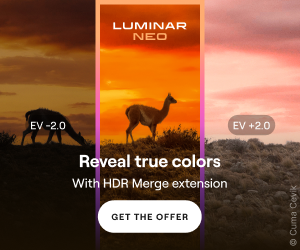Learn Photography
A whole new way to learn photography
I’ve spoken with thousands of people who – despite the beginner or even intermediate courses they’ve taken – are still confused about the basic elements of photography. It’s obvious that many traditional methods of teaching photography just don’t work!
I’ve developed my own style of teaching. It’s based on an artist’s natural instincts of curiosity and discovery which quickly produces dramatic results. Through my many free resources on this site and my photography tutorials, you’ll learn about photography in a whole new way. I will help you take your first few steps the path to creating your own kind of art.
Software you need
I’m constantly trying new things, but I only review stuff that I actually use. That should help keep the clutter down and keep you focused on the best stuff out there. I hope these reviews are of benefit to you in your lifelong adventure of photographic fortune and glory.
- Aurora HDR 2019 – I developed this software along with Skylum for HDR and general processing. The latest release runs on both Mac and Windows. I also have a free tutorial and a special video tutorial just for Aurora!
- Luminar Review – Luminar is an extremely powerful and fast photo editor that can do not only the most basic adjustments, but literally millions of “looks” for your photo. It’s extremely easy and fun to use and designed for all skill levels.
- SmugMug Review – this how I share my photos online… I think SmugMug is the absolute best image portfolio and website tool
- Plotagraph Review – A Plotagraph is a “looping” photograph. You begin with a SINGLE image (not a movie file), like a JPG, and then you use Plotagraph to “animate” it. The resulting image is a repeating movie file that loops so smoothly, you can’t see the seam. There’s also some crazy new tech on there, like morphing and more.
- Screenflow Review – the easiest and best video editing and screen recording software for Mac. I also use Telestream’s other product called Wirecast for live streaming on Facebook and Youtube.
I have many more photo software reviews of packages I’ve used and recommend.
Software & Tools
Aurora HDR 2019 combines everything Trey knows about High Dynamic Range photography and takes it light years further. Additionally, Trey has created thousands of different presets for Adobe Lightroom and Aurora HDR. The presets will save you countless hours and give your photos a unique look.
Video Tutorials
Trey’s photography tutorials showcase his unique teaching style combined with amazing videography. He will guide you slowly through the basics or you can jump straight to see his advanced techniques. The video tutorials include in the field instruction and detailed, step-by-step, post-processing workflow.
Photo Adventures
You’re invited to join us for a once-in-a-lifetime photo adventure of epic proportions! You’ll end up with great photos and stories, no matter your skill level.
Helpful eBooks
There is a growing collection of helpful eBooks in our online store that cover everything from Trey’s artistic influences to his more advanced techniques.
Cameras I Recommend
Below is a list of cameras I recommend that should work for any skill level or budget. In addition, I have a more complete list of my camera equipment that covers all the gear I use for my photography.
![]()
Good Camera: Google Pixel 7 Pro
The Google Pixel mobile phones are AWESOME! My Pixel 7 Pro is the best phone I’ve ever used. Read my review of the Pixel 7 Pro here. You can buy them unlocked direct from Google and there are two different models, they both have pretty much identical specs inside and out except for the size/screen and battery capacity. I once did a Sony a7R Series Review where I sneaked in a Pixel photo. Everyone had trouble finding it and seeing the difference between these two drastically different devices.
- Check price of the Pixel 7 Pro (6.7 inches @120hz with HDR+, 512GB storage, 12GB RAM, triple camera setup)
Also, I don’t follow scores from DxOMark but if that’s your sort of thing, you’ll see here that the Pixels are right up near the top of the scores regularly. But I can tell just by using it in a variety of conditions and comparing it to photos from friends using the latest iPhone or Samsung. They’re always blown away at the quality of the photos and you can see a bunch of examples in my review.
Better Camera: Sony a6400
Starting at below $900 for the body and under $999 with a compact 16-50mm lens.
- Check price of the Sony a6400 on Amazon
- Check price of the Sony a6400 on B&H Photo
The a6400 is the latest evolution of the high end Sony APS-C models. It features, amongst other great features, enhanced autofocus speed and 4K movie recording. You can read my complete Sony a6400 review here. It features a bunch of images from my month long trip to Africa where I paired it with a model from the higher end a7R series. It performed very well in a wide range of situations.
Best Camera: Sony a7CR
- Check price of the Sony a7CR on Amazon
- Check price of the Sony a7CR on B&H Photo
A full-on Sony a7CR Review is here on the site that is packed of a ton of sample photos. It’s a great camera and much more affordable than some of the competition and especially those medium format beasts from the likes of Hasselblad and Fuji. I absolutely love it. It has all the power of the giant DSLR systems with comparable specifications at a lower price and smaller size/weight. Its Full-Frame goodness combined with a small mirrorless form factor gives you everything you need. Plus, the camera smarts inside are absolutely insane. Check on the review there to see even more!
Best Drone: DJI Mavic Mini 3 Pro
About a decade ago I got a quadcopter and I LOVED it! With one you can get amazing photos and videos from previously unattainable perspectives.
Back then the tech was a bit complicated, flight times were not great and image quality was decent but still had a bit to go. After a bunch of updates DJI created two amazing products though. The Phantom 4 Pro which has the largest sensor on a consumer drone and the Mavic 2 Zoom quadacopter (that’s what my daughter Scarlett calls them!). I used both extensively but technology has continued to evolve and now DJI have packed a lot of the same features and spec into the amazingly compact Mavic Mini 3 Pro. I use it as my go-to machine due to how compact it is and the really cool feature where it zooms in and takes 9 shots before creating a super high res image. Check out my Mini 3 Pro review which has loads of pics an video to help you make a buying decision.
Best 360 Camera: Insta360 X3
 I’ve tested a bunch of 360 cameras and the Insta360 X range is definitely the best so far. I love the auto-stitching and removal of the selfie-stick. This is perhaps a very strange feature to mention, but I like how it makes all that nonsense disappear. The end result is that it has the equivalent feeling of a silent quadcopter floating a few feet away from your head all the time. They also have some cool software that lets you control what the viewer can see in post production and these now have awesome stabilization. Check out my review for more info on the previous model to give you an idea of what you are getting.
I’ve tested a bunch of 360 cameras and the Insta360 X range is definitely the best so far. I love the auto-stitching and removal of the selfie-stick. This is perhaps a very strange feature to mention, but I like how it makes all that nonsense disappear. The end result is that it has the equivalent feeling of a silent quadcopter floating a few feet away from your head all the time. They also have some cool software that lets you control what the viewer can see in post production and these now have awesome stabilization. Check out my review for more info on the previous model to give you an idea of what you are getting.
My Lenses
I own a pretty good number of lenses. I will put these in the order that you should buy them if are primarily interested in landscape and secondarily interested in people/objects. Of course, there is no “correct” order, but simply a suggestion.
Note that you do not need all these lenses!
- Sony FE 24-105 f/4 G Series (Amazon) | B&H Photo) – An excellent high end lens that covers a good range. Ideal as a single lens to travel with. See image examples on the Sony a7R IV review. I keep this lens on my camera 70% of the time!
- Sony FE 24-240 f/3.5-6.3 (Amazon | B&H Photo) – This lens is great. I hate changing lenses and this goes from fairly wide at 24mm to a great zoomy-zoom of 240mm.
- Sony FE 16-35 f/2.8 G Master (Amazon | B&H Photo) – A versatile wide angle lens with a great wide apperture!
- Sony FE 12-24 f/4 G Series (Amazon | B&H Photo) – As wide as it gets on Sony FE lenses and a great, sharp lens too.
Sony a7R – Other Goodies!
- Sony Alpha Adaptor (Amazon | B&H Photo) – So that you can attach the other Sony full-frame Alpha lenses to your Sony a7R
- Novoflex Leica Adaptor (Amazon | B&H Photo) – Fantastic for attaching any lens that uses the Leica lens mount. WARNING: Do not get the cheaper adapters. I tried them, thinking it was just a piece of metal, but it was not and many of my photos, especially at infinity, were out of focus. Check out my Leica Lens Buying Guide for more info.
- Nikon F Lens Adaptor (Amazon | B&H Photo) – To hook up your Nikon DSLR lenses
- Canon EF Adaptor (Amazon | B&H Photo) – To hook up your Canon DSLR lenses
Sony A5100 / A6400 Camera – Two Great Lenses
If you are just getting started and want recommendations on your first three lenses, here they are. Often times a camera will come with a “kit lens” that is pretty versatile and can get you a long way. The Sony a6400 comes with a 16-50mm lens that produces great pictures. But there are many lenses that are better for more specialized situations.
- Sony 55-210mm (Amazon | B&H Photo) – This lens is a little big but its versatility is perfect for mid-range stuff like landscapes, birthdays, sports, etc.
- Sony 10-18 F/4 (Amazon | B&H Photo) – A great lens that gives you maximum wide-angle flexibility for landscapes and architecture. To find out more, read my full Sony 10-18mm Lens Review.
Leica Lens Buying Guide
I’m really getting into using Leica lenses with the Sony a7R. You have to manually focus but you still get focus peaking and all of the other sweet features of the Sony mirrorless system. I’ve created a Leica Lens Buying Guide where I’ll chronicle what I learn and recommend.
All Lens Reviews
I only write reviews for lenses that I used and I recommend. Below is the full list.
- Sony FE 24-70mm Review – A very versatile full-frame lens with excellent quality. I keep this lens on my camera 90% of the time now.
- Sony FE 70-200mm Review – An awesome full-frame zoom lens that I used throughout my trip to Africa.
- Sony 10-18mm Lens Review – A great lens that gives you maximum wide-angle flexibility for landscapes and architecture.
- Nikon 14-24 Review – A great wide-angle lens for landscapes and architecture that I use for about 60% of my landscapes
- Nikon 16mm Fisheye Review – A fun lens that seems to work best when there is just A LOT to capture in a scene and traditional wide angle just can’t cut it.
- Nikon 28-300 Review – An incredible lens. I currently use it for most of my landscape shots, unless things get really wide. In that case, I use the 14-24 lens.
- Nikon 24-70 Review – Perfect for mid-range stuff like landscapes, birthdays, families, close-up sports, events, holiday cheer, swinger parties
- Nikon 50mm Review – Ideal for cute children, close-up objects where you like a blurry background, friends, interventions
- Nikon 70-200 Review – A great lens for things that are kinda far away, like animals or sports or that girl you are stalking
- Nikon 85mm Review – Incredible for people shots. Just. Incredible.
- Nikon 200-400 Review – A super-zoom lens, perfect for wildlife and other shots from a distance.
- Nikon 18-200 Review – A great all-around lens for wide-angle and zoom. Just getting started? This is what you need!
Want to try out a lens? See my Lens Rental review of BorrowLenses.com – Netflix for lenses!
Note:
I only review and recommend software and hardware that I actually use. Because I am viewed as a trusted expert in their software, I end up sending the manufacturers of these applications massive traffic. Often, some of these companies will also be financial sponsors. Whether or not they are sponsors, I only use the best of breed and I recommend them accordingly.








